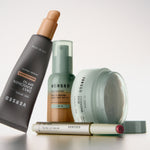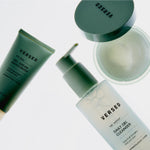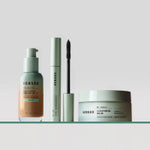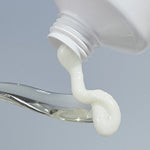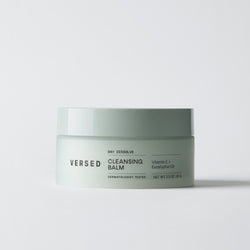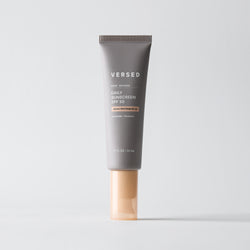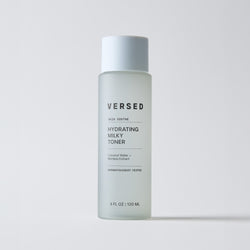Peptides, amino acids, proteins...what do these terms actually mean? We know it’s tempting to skim the science and get right to the good stuff, but understanding an ingredient’s purpose is important when shopping for skincare. Not only will you avoid the trap that is buzzwords and marketing jargon (*cough* “age prevention” *cough*) but you’ll also know which products will deliver results for your skin concerns—and skip wasting time and money on those that don’t.
Welcome to Versed Skin School. Today’s lesson? Peptides, Amino Acids, and Proteins 101. Learn what each ingredient does and how it can benefit skin below.

Amino Acids
To best understand the role each of these ingredients play, imagine you’re baking bread (see, learning can be fun). In this recipe, amino acids are the ingredients. Similar to how many ingredients (flour, yeast, water) make up bread, there are several types of amino acids.
There are essential amino acids (not produced by the body and found in supplements and skincare) and non-essential amino acids (naturally produced by the body). Both types make up skin’s Natural Moisturizing Factor (a.k.a. keep it hydrated and smooth), strengthen the moisture barrier, and help neutralize free radicals that contribute to premature aging.
Peptides
The next step in any recipe is to mix the ingredients together. If several amino acids are combined into a single string, they become peptides. Because peptides are technically made up of amino acids, they share many of the same abilities: drawing in moisture, fighting off damage, and keeping skin’s structure strong and bouncy. If you’re looking to soften dry, crepey skin or make fine lines less visible, look for peptides when browsing ingredient lists. Our Luminizing Glow Drops contain peptides that hydrate 4x better than hyaluronic acid, known as polyglutamic acid. You’ll also find peptides in our Smoothing Eye Cream, designed to soften the appearance of crow’s feet.
Proteins
If peptides are slices of bread, then proteins are the entire loaf. Both are made of the same ingredients (amino acids) but several slices are needed to make up the entire thing.
Protein is essential when it comes to skin’s structure and function. When protein is present, skin feels firm and bouncy; when it’s not, skin sags and wrinkles become more apparent. There are three kinds of protein that you’ll come across most often in skincare: collagen, elastin, and keratin.
Collagen
Collagen is the most abundant protein in our bodies and probably the one you’re most familiar with. While our skin produces collagen naturally, it does break down over time (which is why aging skin looks crepey and tired). While you can’t prevent that degradation from happening, you can take in extra sources of collagen through diet, supplements, or applying it topically through skincare. There’s limited research, however, that proves outside sources of collagen are very effective. Instead, prevent it from prematurely breaking down by incorporating antioxidants and sunscreen into your daily routine. Another vegan-friendly option is to look for microalgae in your skincare, formulated in our Advanced Night Cream. This topical ingredient has a similar amino acid profile to collagen, firming skin and improving tone in weeks.
Elastin
This protein helps maintain the structure of our skin cells, keeping skin youthful and, well, elastic. Like collagen, we lose elastin as we age. One way to keep skin nice and plump is with retinol. A vitamin A derivative, retinol increases the speed at which new skin cells are produced, evening out bumpy texture and restoring skin’s bounce. Apply our Gentle Retinol Serum nightly to reap these benefits.
Keratin
Keratin is responsible for keeping skin—and hair and nails—strong. This protein shares similar properties with collagen and elastin, but may be especially relevant if you have keratosis pilaris (KP). Often referred to as "chicken skin", keratosis pilaris is a skin condition caused by excess keratin. This protein buildup blocks hair follicles, causing small bumps to appear on the skin, including our arms, legs, and bum. To help treat keratosis pilaris, exfoliate away excess skin cells using a facial exfoliator or body scrub. Since KP is more common for dry skin types, follow up with a cream, like Skin Soak.
Read about the benefits of fatty acids and ceramides next.

